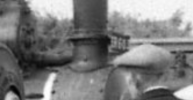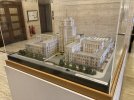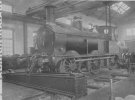I reckon the cars are at the same steam rally as the traction engines / rollers.
There were far fewer rallies in the '60s, and this one looks like quite a big event.
The East Anglian Traction Engine Society rally in 1962 was held on 22 September - which is quite possible given the foliage, attire and length of shadows on the ground. I don't know the location, but possibly around Ely. ('Traction Engines on Parade' by Anthony Beaumont has pictures labelled 'Ely 1962', one of which is of Aveling 7898 'Margaret')
I'm fairly sure the engine next to Aveling 4403 is McLaren 5 ton tractor 1413 of 1913, reg AL8769. According to the 5th edition of the Traction Engine register (pub 1987 and the earliest I have), there were not many surviving engines had 'AL' registrations. Many of those that did were Fowler ploughing engines. The valve chest cover of the Mclaren is quite distinctive. Sorry, can't find a picture of this engine to compare with.



 .
. 
